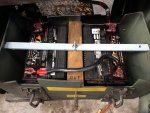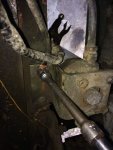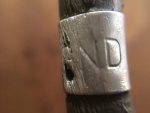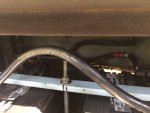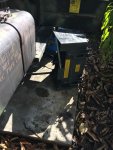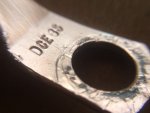OK U say FRONT batt, I am going to talk about the FIRST batt in the charging line here,,, YES! Charging batterys are like filling a pool, the charging system would have to over charge your first batt to fully fill the second, The resistance from the batts that turn the charging system off is set as NOT to over charge the first batt, Oh yes it is,. So the facts are as U suspect the Batts down the line never fully charge and there fore sulphate faster than the first batt,,, The charging systems in our and all trucks are NOT smart chargers, Batterys in ALL military vehicles should be pulled cleaned and fully bench charged and ROTATED and re installed if you want MAXIMUM battery life,At least once a year/
Simple TRUE facts, U can charge em in truck with a 12 volt charger on each and do not have to disconnect anything, between rotations, Batts will start a vehicle in good running order at 70 percent full, so it gets deceiving that people think there batts are full when they are NOT! ...
U noticed something many never get, Good call, Oh and when U need a batt, U do not need to buy 2 , if U only need one, almost ALL of these trucks are running with lower batts down the line so to speak, Just put the newer in the back, and rotate em, Now This is assuming U know how to test batts , and If the first is holding its current in the test No reason to replace it. I try hard to rotate em twice ayear, I have more than 10 years out of older Mil batts a few times,
Remember when your batts go prematurely , Its not the batterys fault, Its like everything else 90 percent Human error

))))))))
As said above about never having a batt fail, I believe is not the question, The second and last batts in line do not fail, But do die faster than the first because of increased sulphation, Most see a batt die and replace both, And do not realize the second or last batt is the one dying first and putting more strain on the first..
Using a 24 volt charger is fine , But if U want ALL your batts FULLY charged u MUST charge each of them with 12 volt chargers, remember filling a pool. The first batt will stop the charging process so not to over charge the first batt, and leave the later batts wanting,
Oh and remember these batts need at least 13.6 volts to fully charge , a good variable charger does this, Trickle chargers will NOT fully charge these batts even though they will say it is, BECAUSE The resistance level is telling the charger it is full, It is not, but it will run the truck , But will sulphate faster than batts that receive regular FULL charges, All Facts.



